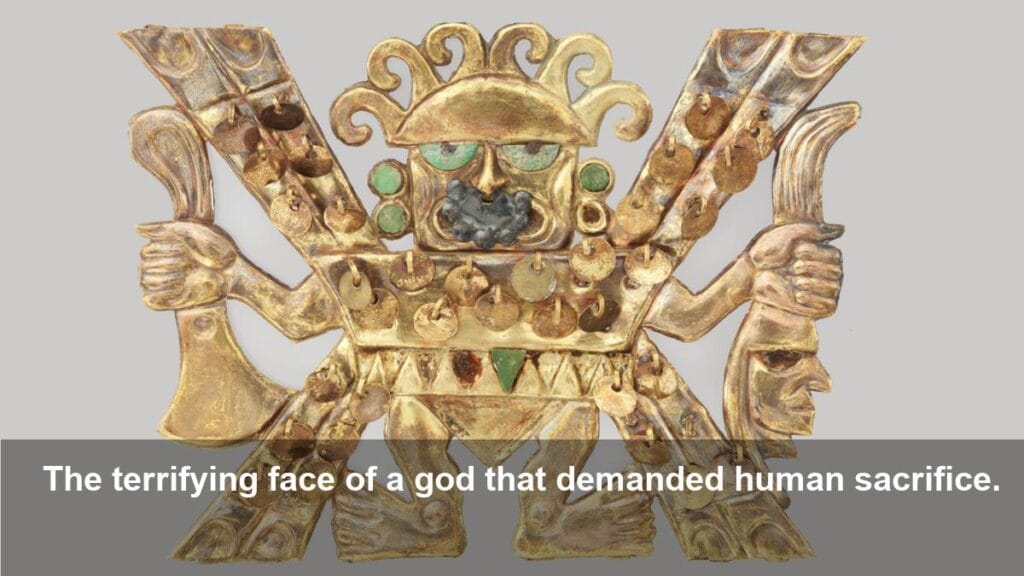Horror in Gold: Decapitator God Jewelry Unearthed

- A stunning 1,500-year-old gold nose ornament has been unearthed by archaeologists in Peru.
- The artifact vividly depicts Ai Apaec, the notorious “Decapitator” god of the ancient Moche civilization.
- This discovery offers a chilling glimpse into the Moche’s practice of ritual human sacrifice to appease their bloodthirsty deities.
- The wearer of this powerful ornament was likely a high-status priest or ruler, embodying the god’s terrifying power.
A Glimpse into a Brutal Past
Archaeologists have uncovered a breathtaking, yet terrifying, piece of ancient history: a 1,500-year-old gold nose ornament from the Moche civilization of South America. This is no mere piece of jewelry; it is a direct link to a brutal world of ritual sacrifice, depicting the Moche’s most fearsome deity, Ai Apaec, often called “The Decapitator.” The discovery powerfully confirms long-held beliefs about the violent religious practices of this ancient culture.
The Face of the Decapitator God
The Moche, who thrived along the northern coast of modern-day Peru from roughly 100 to 700 A.D., worshipped a complex pantheon of gods, but none were as central or as feared as Ai Apaec. Often depicted with spider-like fangs, a snarling expression, and flowing hair, he was seen as a creator god but also a deity who demanded blood to ensure the fertility of the land and success in war. Moche art frequently shows him holding a sacrificial knife in one hand and a severed human head in the other.
This newly discovered nose ornament, an exquisite example of Moche metallurgy, would have been worn by a religious or political elite. By wearing the face of the god, the individual likely acted as an intermediary to the divine, perhaps even presiding over the very sacrifices Ai Apaec demanded.
Ritual Sacrifice and Divine Appeasement
The Moche practiced human sacrifice on a significant scale, a fact supported by extensive archaeological evidence, including murals, ceramics, and human remains. These rituals were not random acts of violence but highly structured ceremonies. Victims, often prisoners captured in battle, were sacrificed to appease the gods and maintain cosmic order. The discovery of an artifact so directly tied to the chief decapitator god reinforces the centrality of this brutal practice in Moche society.
A Symbol of Power and Authority
The craftsmanship of the gold ornament highlights the advanced metallurgical skills of the Moche people. However, its true value lies in its symbolism. For a Moche lord or priest, wearing this ornament was a profound statement of power, faith, and their connection to the divine. It signified their role in a society where the line between the human and the god was terrifyingly thin. This artifact is more than just gold; it is a chilling testament to a belief system where life was given to—and taken by—the gods.
Image Referance: https://www.livescience.com/archaeology/decapitator-nose-ornament-1-500-year-old-gold-jewelry-depicting-a-bloodthirsty-south-american-god

